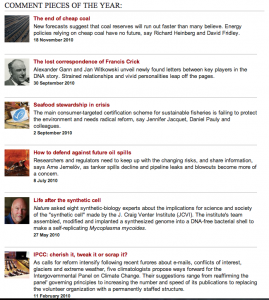 Seafood stewardship in crisis, by Sea Around Us Project members Jennifer Jacquet and Daniel Pauly, as well as David Ainley, Sidney Holt, Paul Dayton & Jeremy Jackson, was chosen as one of Nature’s top six comment pieces of the year. The piece criticizes recent seafood certifications by the Marine Stewardship Council (MSC) and makes suggestions on how the certification could be improved. Read the full piece here.
Seafood stewardship in crisis, by Sea Around Us Project members Jennifer Jacquet and Daniel Pauly, as well as David Ainley, Sidney Holt, Paul Dayton & Jeremy Jackson, was chosen as one of Nature’s top six comment pieces of the year. The piece criticizes recent seafood certifications by the Marine Stewardship Council (MSC) and makes suggestions on how the certification could be improved. Read the full piece here.
Tag: communication
Scientific American Article Explores Catch Data Controversy
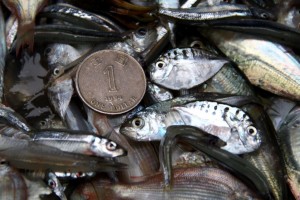 A recent study by Trevor Branch and colleagues asserted that the decline in the mean trophic index is no longer present in the global catch data. But does it really cast doubt on the depletion of big ocean species?
A recent study by Trevor Branch and colleagues asserted that the decline in the mean trophic index is no longer present in the global catch data. But does it really cast doubt on the depletion of big ocean species?
In an article published today at Scientific American, journalist Mike Orcutt explores how best to measure commercial fishing’s impact on ocean biodiversity. He discusses the findings of Brach et al. in light of the new study quantifying fisheries expansion. Orcutt reports:
Pauly says the new PLoS One paper “completely invalidates” Branch’s Nature paper because the authors failed to account for the spatial expansion described in the former. As fisheries move offshore, he says, they first target large fish high on the food web—just as they did closer to shore. “Hence, moving offshore will mask inshore declines in mean trophic levels.”
Read the full article here.
Photo: Tiny fish caught by a trawler off of Hong Kong by Stanley Shea/BLOOM.
Jellyfish as the Catch du Jour
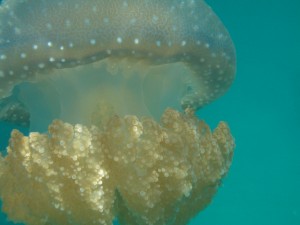 The global catch of jellyfish is now at more than 250,000 tonnes of tentacles every year. However, researchers like the Sea Around Us Project‘s Lucas Brotz, are still trying to figure out if there has been a rise of jellyfish globally. Brotz is using anecdotal information of jellyfish accounts through time to build a global model and he is seeing evidence of population increases but is not yet prepared to say if they are significant, which is mentioned in a recent article at Livescience asking if jellyfish are menaces or misunderstood. His work was also recently mentioned and in a story at edible Vancouver, exploring the jellyfish as the next catch du jour.
The global catch of jellyfish is now at more than 250,000 tonnes of tentacles every year. However, researchers like the Sea Around Us Project‘s Lucas Brotz, are still trying to figure out if there has been a rise of jellyfish globally. Brotz is using anecdotal information of jellyfish accounts through time to build a global model and he is seeing evidence of population increases but is not yet prepared to say if they are significant, which is mentioned in a recent article at Livescience asking if jellyfish are menaces or misunderstood. His work was also recently mentioned and in a story at edible Vancouver, exploring the jellyfish as the next catch du jour.
Collaboration with National Geographic on ‘Seafood Print’
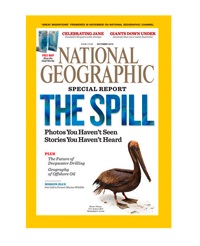 We should be thinking about seafood consumption in terms of the type of fish we eat (predatory vs. forage fish) rather than simply by weight. Enter the seafood print — or the oceanic primary production required to generate a specific fisheries catch — featured this month in Paul Greenberg’s article for National Geographic titled Time for a Sea Change. The work is done by the Sea Around Us Project scientists in collaboration with National Geographic fellow Enric Sala; more details and methods are here. The top three largest seafood prints are made by China, Japan and the U.S. The Washington Post has covered the findings as well as the AFP. More results are to come as part of a scientific contribution, currently under review.
We should be thinking about seafood consumption in terms of the type of fish we eat (predatory vs. forage fish) rather than simply by weight. Enter the seafood print — or the oceanic primary production required to generate a specific fisheries catch — featured this month in Paul Greenberg’s article for National Geographic titled Time for a Sea Change. The work is done by the Sea Around Us Project scientists in collaboration with National Geographic fellow Enric Sala; more details and methods are here. The top three largest seafood prints are made by China, Japan and the U.S. The Washington Post has covered the findings as well as the AFP. More results are to come as part of a scientific contribution, currently under review.
Scientists Question MSC
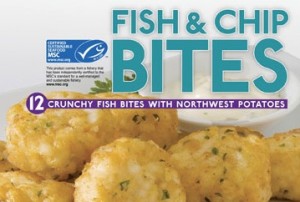 The Marine Stewardship Council, the fisheries eco-certification taken most seriously by consumers and scientists around the world, is failing to fulfill its promise, write six scientists, including the Sea Around Us Project’s Jennifer Jacquet and Daniel Pauly, in last week’s issue of Nature. Read their opinion piece, Seafood stewardship in crisis, or some of the media coverage, such as Why your sustainable fish may not be as guilt-free as you think at The Independent, Scientists criticize system of certifying fisheries at The New York Times Green Blog, or Sustainability certification fails to protect environment: report in the Vancouver Sun.
The Marine Stewardship Council, the fisheries eco-certification taken most seriously by consumers and scientists around the world, is failing to fulfill its promise, write six scientists, including the Sea Around Us Project’s Jennifer Jacquet and Daniel Pauly, in last week’s issue of Nature. Read their opinion piece, Seafood stewardship in crisis, or some of the media coverage, such as Why your sustainable fish may not be as guilt-free as you think at The Independent, Scientists criticize system of certifying fisheries at The New York Times Green Blog, or Sustainability certification fails to protect environment: report in the Vancouver Sun.

